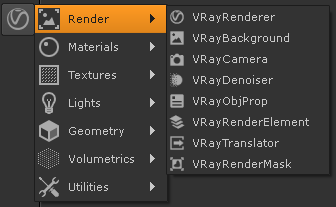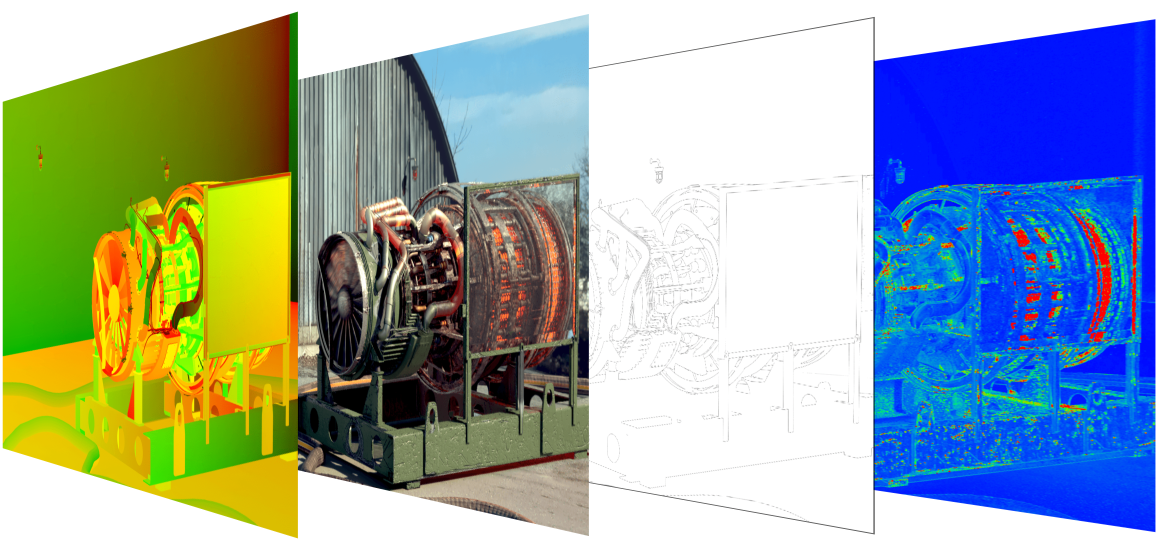Overview
Render Elements are a way to break out renders into their component parts such as diffuse color, reflections, shadows, mattes, etc. This gives fine control over the final image when compositing or image editing to re-assemble the component elements. Render elements are also sometimes known as render passes.
Render elements are generated at render time based on the user's selection before rendering. Most render elements have parameters that can be customized to further assist the composting process. These parameters are described on each render element's individual page, along with common uses and any notes on their generation and usage.
UI Path: ||Toolbar|| > V-Ray menu icon > Render
Render Element Nodes
The following nodes can be used to generate or modify render elements:
- VRayRenderElement – Allows the user to add different types of render elements to the render output.
- VRayDenoiser – Takes an existing render and applies a denoising operation to it.
See the Nuke Rendering In-Depth QuickStart for a guide on setting up render element nodes.
Render Elements Sub-groups
Render Elements in V-Ray break down into four major groups:
Beauty Render Elements
The Beauty Render Elements are the primary render elements that form V-Ray's
pre-composited final render pass known as Beauty or RGB Color. These include the
Lighting, GI, Reflection, Refraction, Specular, etc.
Matte Render Elements
The Matte Render Elements aid selection masking in the compositing process.
These include the Cryptomatte, Multi Matte, Object ID, and Render ID Render Elements.
Geometry Render Elements
The Geometry Render Elements rely on geometry to generate geometry data for the compositing
process. These include the Velocity, ZDepth, and Normals Render Elements.
Utility Render Elements
The Utility Render Elements give insight into how V-Ray is running and extra functionality for compositing.
These include the Sample Rate, Denoiser, ExtraTex, etc.
Notes
- V-Ray always anti-aliases with respect to the RGB Color channel. Therefore, other channels may appear jagged or noisy in areas where V-Ray has placed fewer samples.
- Render elements require additional storage when rendering and thus increase the amount of RAM used during rendering.
- Render elements may slow down the final image rendering a little bit, depending on the number of elements that are selected. They have no effect on GI/reflection, etc. calculations.






